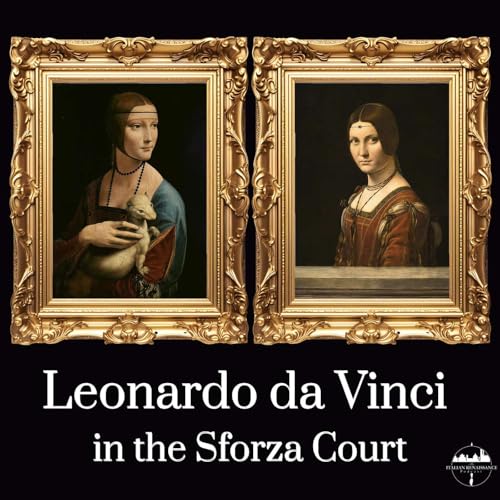
Ep. 66: Leonardo da Vinci in the Sforza Court
Failed to add items
Add to basket failed.
Add to Wish List failed.
Remove from Wish List failed.
Follow podcast failed
Unfollow podcast failed
-
Narrated by:
-
By:
About this listen
There is no better way to explore the art and politics of the Sforza court in Milan than through the eyes of Leonardo da Vinci. Leonardo spent most of his early career employed by Ludovico il Moro, the regent and eventual Duke of Milan. This episode ties together the drama and intrigue of Sforza court politics with the work Leonardo did during his First Milanese Period (1482-1499).
Some of Leonardo's most innovative painting arrived in this period. Beyond his Last Supper, the Renaissance master also worked on court portraits. Looking at both Lady with an Ermine and La Belle Ferronniere, we unpack the history of the ladies of the Sforza court and the complex social structures in Leonardo's Milan. Additionally, we explore the sophistication of Leonardo's style and ingenuity, especially as precursors to his Mona Lisa.
This conversation ultimately ties the complicated threads that unite art, court culture, politics, gender, and romance in Renaissance Milan.
Support/Watch/Follow: https://linktr.ee/italian_renaissance_podcast
Works Discussed:
Leonardo da Vinci, Genevra de' Benci, ca. 1478 https://www.nga.gov/artworks/50724-ginevra-de-benci-obverse
Leonardo da Vinci, Lady with an Ermine, ca. 1490 https://artsandculture.google.com/asset/lady-with-an-ermine-leonardo-da-vinci/HwHUpggDy_HxNQ?hl=en-GB
Leonardo da Vinci and workshop, La Belle Ferronniere, ca. 1497 https://collections.louvre.fr/en/ark:/53355/cl010062372
Salai, Head of Christ the Redeemer, 1511 https://ambrosiana.it/opere/testa-di-cristo-redentore/
Get additional content by becoming a Patron: patreon.com/TheItalianRenaissancePodcast
Support the show



